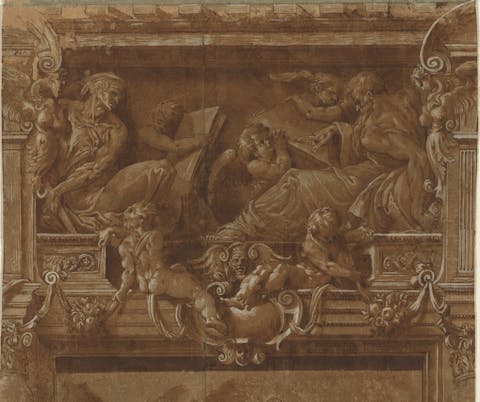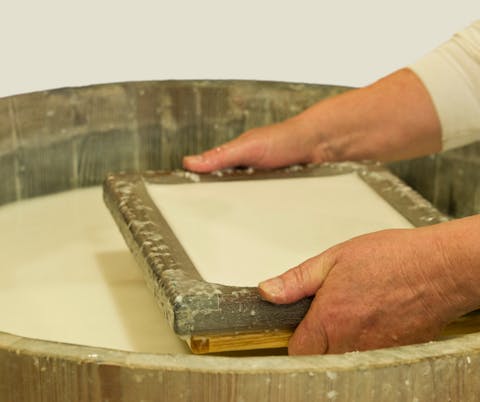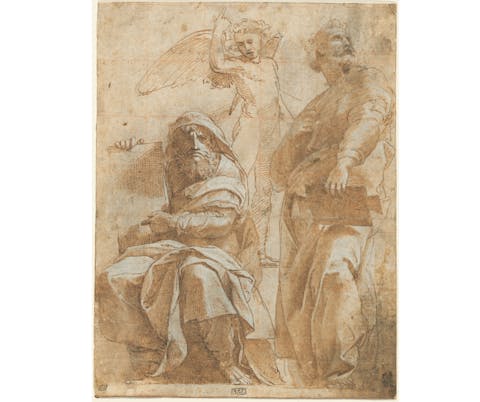How to start an Old Master Drawings Collection
written by Crispian Riley-Smith
Collecting Old Master Drawing is fascinating and very rewarding to the collector. Drawings are the often the first glimpses, the sketches of the first ideas of something that later could have become a masterpiece. Read more if you are interested in how to start collecting Old Master drawings, where to look for them and how to take care of your collection.
The Triumph of Venus, Italian, 16th century, pen and brown ink. Image: Julius S. Held Collection, National Gallery of Art /License: Public Domain
This article is going to give you a brief glimpse into the exciting world of collecting Old Master Drawings. An area I have worked in for over 30 years as an auctioneer for 8 years, and as a dealer for the last 24 years. I have also been involved in setting up and running 2 art fairs: “London Art Week” and “Master Drawings New York”. This article is going to cover some of the key areas you will need to consider if you are thinking of starting a collection, or indeed if you are buying already. I will start by briefly explaining what is an Old Master Drawing, then looking at the areas you might want to consider focusing on; then go on to look at the key area of research, which needs to be done when buying anything; budget; and finally where you can go to buy these amazing treasures.
Click Here to Check the Latest Drawings Auctions at Barnebys!
What is an Old Master Drawing?
Firstly one of the most frequently asked questions by someone who does not know the field is “What is an Old Master Drawing?” The simplest answer I can come up with is that it is an original work on paper from 1500-1900, drawn in Europe. This leads onto other questions such as “What is a Drawing?”; what is an “Old Master”? What is paper? Why 1500-1900? Why only European? All these questions have answers that also lead onto further questions. This is fine since this field is full of questions, and often answers not fully answered.

Thomas Gainsborough (British, 1727 - 1788), Landscape with Cattle by a Cottage, late 1770s, black and white chalk on gray prepared laid paper, Image: Gift of Mimi and Sanford Feld, National Gallery of Art / License: Public Domain
What is a Drawing?
This simple question covers a huge field, and I would say a drawing is an original sketch made on paper, though this is not always paper, it can be card, or panel or indeed a canvas. Now this drawing can be done in a multitude of mediums, ink, watercolour, oil, black chalk, crayons, gouache, to name a few. Indeed these mediums change over time depending on what was available and technological developments. Drawing differs significantly from a print, in that a print is created by a mechanical process. A drawing crucially is a unique piece created by the artist onto paper. Sometimes a drawing can look like a painting, and the difference is also often academic. Are pastels drawings but also paintings? Some grisaille drawings are drawn on panels and are a cross between a drawing and painting.
Related: How to Value Drawings

After Jacopo Zanguidi, called Bertoia, Prophet and Sybil, Italian 16th Century, pen and brown ink with brown wash over graphite, heightened with white, on two joined sheets of laid paper, mounted to canvas. Image: Gift of William B. O'Neal, in Honor of the 50th Anniversary of the National Gallery of Art / License: Public Domain
"Sometimes a drawing can look like a painting, and the difference is also often academic. Are pastels drawings but also paintings? Some grisaille drawings are drawn on panels and are a cross between a drawing and painting."
What is paper?
Paper started to come into Europe around 1500, yes paper was being manufactured in China centuries before the 1400s, but paper only started to come into Europe at this period. Drawings before that do exist in Europe, and they were mainly done on vellum or the surface of the wall, and are known as ‘sinopia’, since these were the only supports and mediums available at this time. The field of Illuminated Book Manuscripts is a whole different field, and I will not discuss this here. Drawings were frequently drawn on paper, and the whole subject of paper is fascinating, and there were literally hundreds of different paper manufactures across Europe. It is a subject in itself and is one I am especially interested in. Since I have handled 1000s of pieces of paper from 1500 till the present day, as a specialist, I get a sense of how old paper is from just my experience. Also the paper often has watermarks, which can pinpoint their date of manufacture accurately. But there are many nuances to this, for example paper often took a few years from creation to get into circulation. This was because the paper needed to dry, it may have rested at a paper merchant for a few years, or indeed an artist may have bought paper and not used it for a few years. There are some simple guides about hand made paper, which is essentially pre-1870s, and pulp paper, made after 1870s. Hand made paper has chain lines, which are the residue impressions of the support for making paper, whilst pulp paper does not have these chain lines. Drawings can often be drawn on canvas, but are usually referred to as paintings. A case in point is oil sketches, which are often painted in oil, drawn on paper, and laid onto canvas. Explain that one.

The process of paper making. Image: Canva /Public Domain
What is an Old Master?
I would say that the term “Old Master” is loaded since it implies artists such as Michelangelo or other great household names. But I would prefer to use the term “Master Drawings”, which is more encompassing and essentially covers any artist, whether they are amateur or professional. Of course the field that I cover is huge and collectors mostly focus on an area to get the benefits and advantages and also the opportunities, of which there are many. Collectors are not able to be encyclopaedic due to resources and opportunities, and I would even argue museums cannot be like this. To my mind Master Drawings covers a much broader field, and covers works on paper from America, China and Europe from 1500 to the present day. As I mentioned earlier, the field is huge.
"I would suggest that as collector you should focus on an area, and this requires some work from you as the collector. You will need to read articles, visit museums, speak to dealers, speak to other collectors."

Raphael (Italian, 1483 - 1520), The Prophets Hosea and Jonah, Italian c. 1510, pen and brown ink with brown wash over charcoal and blind stylus, heightened with white gouache and squared for transfer with blind stylus and red chalk, on laid paper. Image: The Armand Hammer Collection, National Gallery of Art/ Public Domain
Focus of collecting
I would suggest that as collector you should focus on an area, and this requires some work from you as the collector. You will need to read articles, visit museums, speak to dealers, speak to other collectors. The reason for this need to focus are three-fold: time, money and opportunity. You do not have an endless amount of time to devote to this passion. You will not have an endless supply of money, and also I believe the best buying opportunities are going to come from having this focus. As I have mentioned the area of “Master Drawings” is massive, not only does it cover the whole world, it also includes to my mind, all artists from architects, to designers, to amateur draughtsmen such as military engineers, and fashion designers have become popular recently. I would suggest you take your time to choose an area that interests you, not too much time, since I can guarantee that your tastes will change over the years, as well as your budget, and how much time you can give to this passion. It is a “passion purchase”, as I like to call it. Some areas you could consider are exclusively pastels; or Dutch drawings from 1800-1900 of figures; or drawings of animals from zoos. The choice is endless.

Hendrik Goltzius (Dutch, 1558 - 1617), A Foxglove in Bloom, 1592, pen and brown ink on laid paper, Image: Gift of Rosi Schilling in memory of Edmund Schilling, National gallery of Art/ Public Domain
Research
Once you have chosen your area of focus you should get to know the area of your interest a bit more: buy the books that are in your area of focus, go to the exhibitions, visit the museums, get to know the dealers. Soon you will be offered drawings in the area of your interest. In my view this will be your strength because you will get to know the right price points and see the opportunities. By researching your area of focus you will become familiar with the artists’ names, what the difference is between “fully attributed to” or “attributed to” or “Follower of” or “Manner of” or “Style of”, all these nuances are important in affecting the value of the purchase and who did the piece.
Once you have done your research on the area you will also now be familiar with what the budget is to spend in this area. There are a number of tools to give you a guide, which I have included at the end of this article. But also there is nothing like doing the research yourself to get a better idea of the price.
Restoration of Old Master Drawings?
Of course these pieces of paper are old, and they will have changed over time. This is in large part a matter of taste and personal opinion. I would say that hand made paper is remarkably resilient, and it is very surprising how paper can survive hundreds of years, and still be in an amazing condition. Also if paper is not looked after, and is kept in a damp store room, or exposed to light the effects are not good. Since I have been involved in the conservation and restoration of many works on paper I have my own experience, and I would suggest contacting a conservator. See the link below for on-line resources to finding a conservator.
On-line and real world tools to building your collection
Finally where to find these treasures? There are now many more opportunities to find these beautiful treasures with the explosion of the internet and different auctions, art fairs and on-line resources. There are literally hundreds of auction houses in the UK and Europe and many of these are listed on www.barnebys.com and of course Sotheby’s; Christie’s; Phillips and Bonhams have their own websites. There are some amazing art fairs where you can meet and join the community of collectors such as in Paris, www.salondudessin.com , in Maastricht www.tefaf.com , in London, www.londonartweek.co.uk , in New York www.masterdrawingsnewyork.com
For conservation of all objects see www.icon.org.uk
Crispian Riley-Smith works at Crispian Riley-Smith Fine Arts Ltd, which focuses on Art Valuations, and Consultancy in Buying and Selling (www.riley-smith.com/crispian)
Do you have Old Master Drawing and want to know its value? Start your Appraisal Here!

